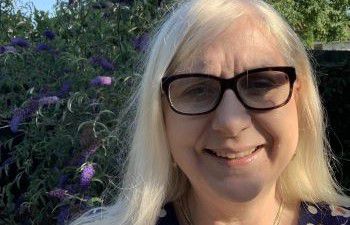Five minutes with Antonella De Santo: “Dark matter is one of the most intriguing mysteries in science”
Posted on behalf of: Internal Communications
Last updated: Thursday, 1 May 2025

Antonella De Santo, Professor of Physics (School of Mathematical and Physical Sciences) has recently been invited to join an international collaboration researching the phenomenon of dark matter, potentially revolutionising our understanding of the universe. We caught up with Antonella to find out more about her work, what she loves about Sussex and why it’s important to get immersed in nature.
Dark matter is one of the most intriguing mysteries in science. It does not emit light (hence it is ‘dark’), but its imprint can be seen throughout the universe, such as through the gravitational pull it exerts on the motion of galaxies. I have recently been admitted to the prestigious Xenon Lux-Zeplin Darwin (XLZD) consortium - an international project poised to become the world-leading facility for the direct search for dark matter. Although dark matter accounts for around 85% of the total mass in the universe, its nature remains elusive. The direct observation of dark matter would be groundbreaking.
Research and teaching are my professional passions. I just love doing research, often in collaboration with PhD students and other early-career researchers, and also with those who are external to Sussex. In parallel with XLZD, I lead the Sussex team working on the ATLAS experiment at CERN’s Large Hadron Collider – which shared in the Higgs Boson discovery in 2012 and in the recent 2025 Breakthrough Prize for Fundamental Physics award. There is nothing like exploring nature at the very boundaries of knowledge, and doing that collaboratively as a team. I also greatly enjoy teaching and mentoring students. They are the future.
I conduct a lot of my research at CERN, the world-leading laboratory for particle physics research. The ATLAS Collaboration, of which I am a member, is one of the largest collaborative enterprises ever achieved in science. It has around 6,000 participants and 3,000 scientific authors – physicists, engineers, technicians and support staff from more than 170 institutions in 40 countries. And did you know that the World Wide Web was invented at CERN in 1989? It is the brainchild of Sir Tim Berners-Lee, who originally developed it at CERN to facilitate information-sharing and collaboration between scientists from around the world.
Sussex is an eclectic environment, with opportunities to make new creative encounters and learn from people with diverse viewpoints. It was through one such encounter with colleagues in the Faculty of Media, Arts and Humanities that I became involved in the immersive HALO artwork by Brighton-based artist duo Semiconductor, which in 2021 premiered in the UK at the Attenborough Centre for the Creative Arts – one of my favourite buildings on campus.
I love to travel and sightsee, and in the past I would have called myself a city dweller. Nowadays, though, in my free time I like to go for beach walks or spend time pottering in my garden, listening to some music or simply enjoying the wind on my face or the sunshine. I find being immersed in nature very relaxing and conducive to deep thinking.
For a long time, I have wanted to walk the ‘Camino de Santiago’, also known as ‘The Way of St James’, the full Camino Frances route from St-Jean-Pied-de-Port to Santiago de Compostela. For one reason or another, I have never managed to do it. I guess I should just get those new boots!

